Sound Department MTL: From production sound to the final mix.
Its aim is to optimize the sound experience to ensure the quality of a project. All members are trained and equipped for sound recording and mixing in film, television, advertising and music creation. This group allows us to exchange knowledge, equipment and training on the latest equipment and new horizons such as miking and mixing in 5.1 or 7.1. Sound Department MTL is mainly dedicated to film shoots.
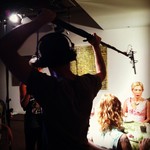
Film recording
The sound recording on the set is the task of engineers; boom operator, sound recordist or assistants, each of them takes care of audio quality. A good sound recording during a film shot is a complex task that requires a lot of attention and dexterity, the awareness of acoustic environments and the use of recording techniques. All these factors differ according to the sound source or the environment in which the director wants to express its intention. Excelling the sound with a good filming is an art. It requires reliable experience and technical work. Each moment is unique, also is the capture of its vibration.

Production sound
Recording sound may require only one engineer. In television or advertising he is capable of performing both positions simultaneously: the operator, who capture the sound with his boom microphone, and the mixer, who adjusts volume levels accurately. This complex task also requires to hide microphones in the scenery and on the actors to provide a more aesthetic touch to the picture, without compromising the sound.
Studio recording
Whether it is to record a voiceover or re-recording voices to dub a film, our recording studio with video monitor, rythmo band, sound banks and sound compositions, allows multiple features . The engineer will be able to calibrate the audio gain to optimize the sound recording, and then to validate his work in correlation with the director. Downstream, the foley artist in charge of the sound design will create distinctive sounds to give greater impact to the image or to affirm an intonation.
Motion capture recording
Motion capture (or "mocap" for short) consists in recording the position and rotation of items or living beings to control their virtual counterpart on a computer. In the motion capture room (called the "capture volume"), the boom operators are working the same way as on a movie set. Actors are wearing neoprene suits equipped with multiple reflectors as well as cameras and personnal microphones. As on a movie set, all the sounds are recorded with 2 boom operators who follow the action and capture the dialogues and movements from the actors in real time.
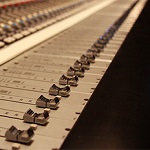
Studio mixing
The sound mix is the moment for the audio editor to use sound libraries, foley and pre-recorded sounds, for example when shooting, to create the sound design and adjust the film score. His goal is to harmonize them according to the intentions of the director. This requires to specify the levels of sound effects, room tones and music of the film in order to optimize the balance, the equalization, the calibration of compressors and the reverb. Our experience, equipment and studio allow us to offer personal filmmaking and turnkey packages!
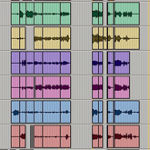
Dialogue editing
The sound editor can be specifically assigned to the dialogue editing. The dialogue editor will manipulate and organize the dialogues by working with the "source files" recorded on set and provided as OMF and AAF files. Eventually, the editor will have to verify the conformity of the different tracks and their file format. They organize the audio elements from the video editing in order to prepare them for the audio mix; in order to obtain a better quality, they can also look for tracks that were not used during the video edition.
Their task also consists in equalizing the dialogues or, if issues occurred during the recording, in restauring them to attenuate or remove any sound that damaged the dialogue. They take care of the continuity of the dialogues using crossfades and by inserting room tones recorded on set. If needed, they will add the re-recorded dialogues using a room tone as a match cut, and synchronize the foley sounds that are required.

Sound design
Besides the musical field, the sound designer takes into consideration everything that produces sound, in its treatment as well as in its application. They transform and organize the sounds (music, dialogues, comments, foley, etc.) in a creative manner and in relation with the narration. Where an illustrator represents pictures, the designer brings life to the objects, the timing and the harmonical structures of the audio spectrum.
The sound designer can work with multimedia projects (video game, website, film, advertising or industrial film, music recording, etc). Their range of action can consist in traditional functions of music composer, acoustician, sound editor, foley artist, sound illustrator. They think and forge the sound to serve an intention.
Foley
Foley is a crucial step during the film production. It is conceived in post-production and, in general, after the picture has been edited, in auditoriums specialized and equipped with different floors in order to re-create the footstep sounds on any possible surface, as well as other accessories. The foley artists create concrete sounds from varied items they own and collect throughout the time, or with their body. The main difficulty resides in the fact that it is often required to link the foley sound to a real one recorded on the film set.
Here is an example of a foley studio presented by Academy Originals:

Audio repair
Repairing audio consists in fixing the audio distorsion, directly on specific frequencies, and allows to repair sound cuts and eliminate unneeded sounds from the recording, or to reconstitute the voice and clean issues from the audio production. A hum noise of 60 Hertz, a hiss or a noisy environment can ruin a soundtrack. When the background or ambiant noise becomes undesirable and threaten to dialogues quality, the Dialogue Denoiser allows to identify the base frequency of a hum and removes it precisely while preserving the harmonical frequencies, assuring the global sound to be clean and free of interferences.
Today, the spectral repair enables to identify the frequencies or problematic areas with more precision with a technology that consists in repairing, attenuating or refining a sound rather than just cutting it. Once an issue has been identified, the spectral repair algorithms and their treatment tools can re-synthesize the audio by taking into consideration the tonality and changes like the vibrato or the characteristics of the background noise and passing elements. With the power of these tools, we can remove or attenuate undesirable and background noises without impacting the initial quality.
One of the steps of the repair can also improve the quality of the sound by controlling the acoustic field captured in a recording. Attenuating the reverberation of a space can make the dialogue more pleasant to listen to, and reduce really large acoustic spaces, like cathedrable, to bring a warmer impression.
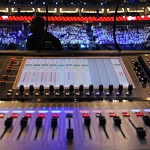
Live event sound system
Are you looking for a sound system service for your event in Montreal, its region or anywhere else?
We are here to accompany you during the organisation process by providing an analysis for your technical needs
and by assuring the installation and direction of the audio equipment.
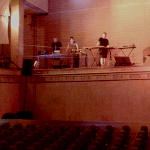
Live event recording
Whether it's a band, a theater company, or any other group of artists, a show is a specific moment that requires sound system and recording. With our expertise in acoustics of the room where the event takes place, we are able to create a unique sound. Using multitrack recorders, microphones and sound consoles of all kinds, we have all the necessary tools for each specificity.
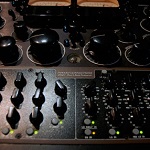
Mastering
Mysterious and little known to persons unfamiliar with music recording, mastering is the final step that allows to bring the latest corrections and enhance the sound mix. As for the film colorization, the sound engineer will calibrate frequency equalizers and compressor-expander to provide a perfect finishing and get an equalized and pleasant sound to hear. Mastering allows the harmonization of sound changes and adds brilliance to finished product.